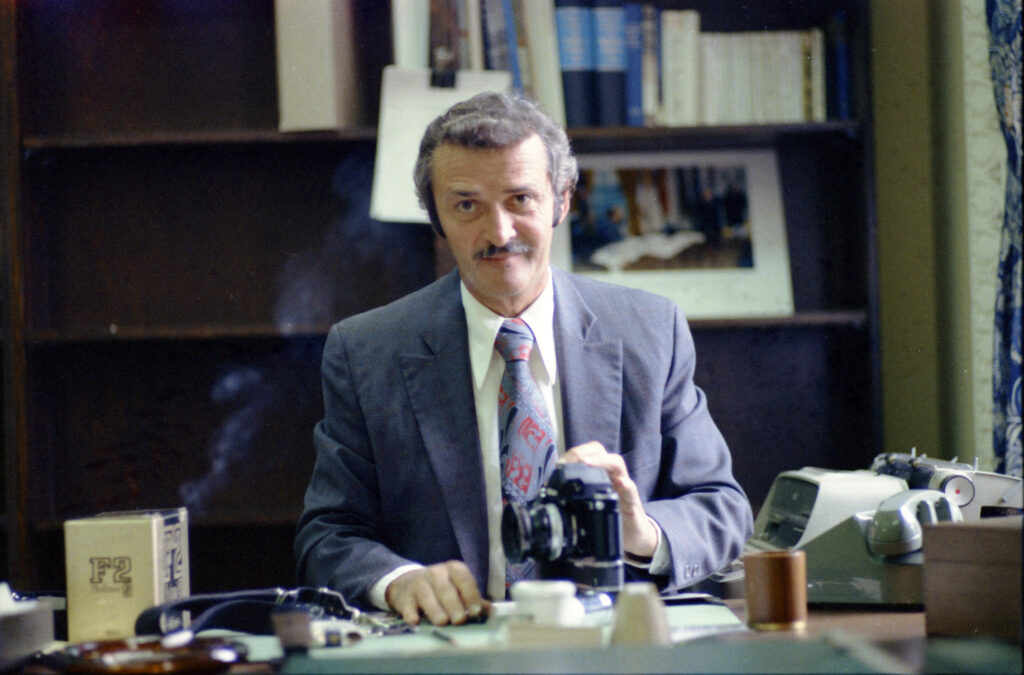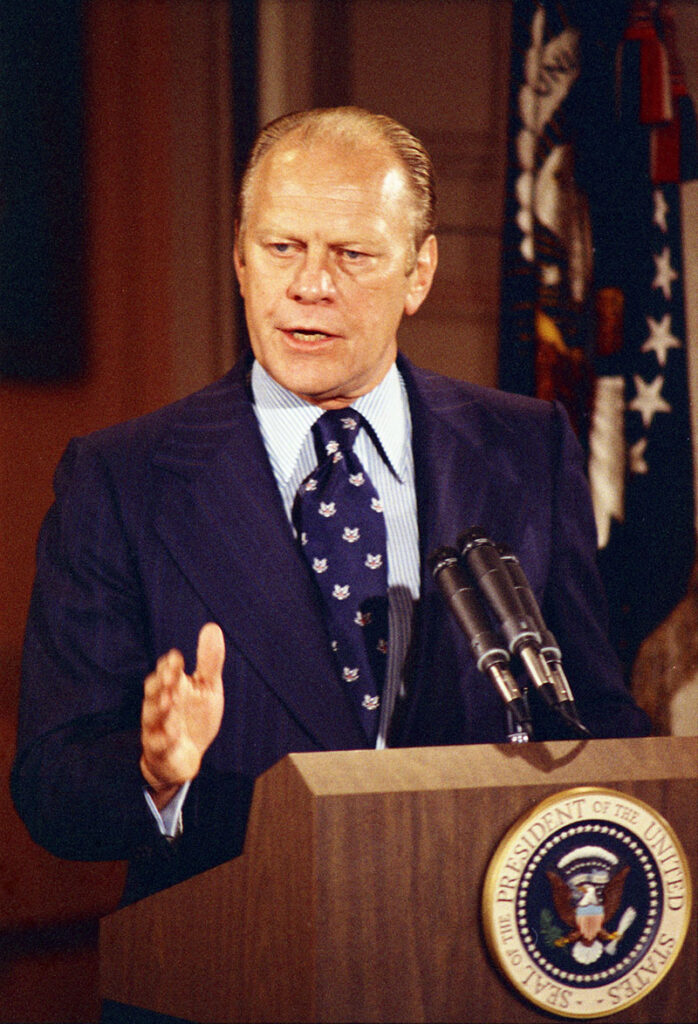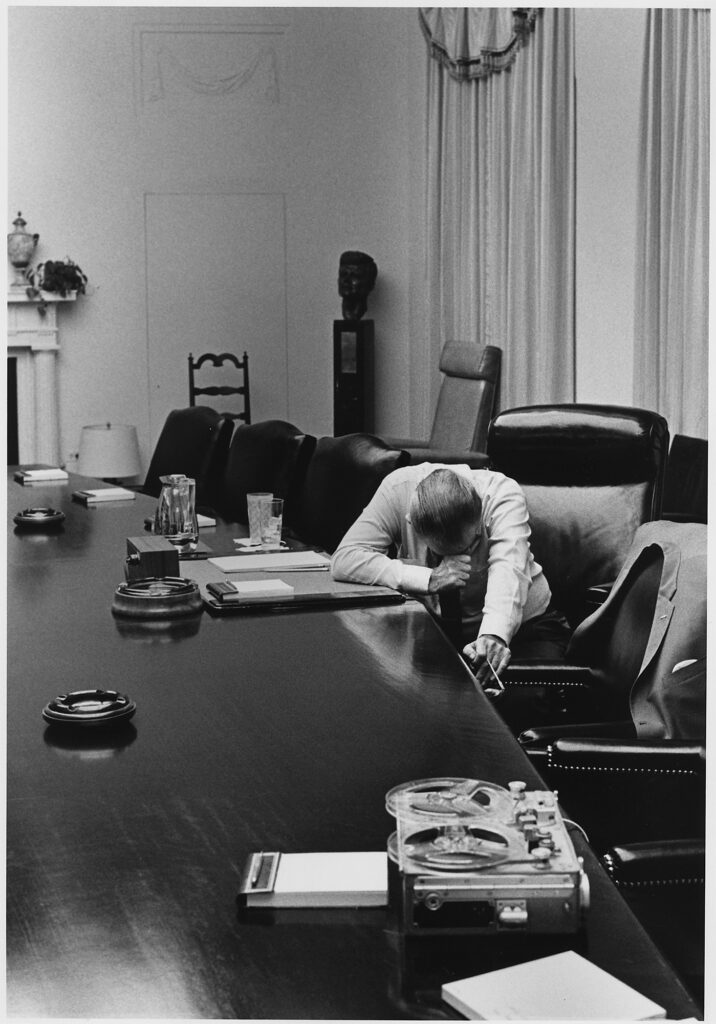Today we’re taking a peek behind-the-scenes at the Ford White House and profiling one of the staff in the White House Photo Office (WHPO). As a photographer, Jack Kightlinger was more often behind the camera than in front of it, but here he poses with a camera in the White House Photo Office in an image taken by William Fitz-Patrick on August 8, 1975.

A6011-03A
Courtesy Gerald R. Ford Presidential Library
The WHPO was created in the 1960s during Lyndon Baines Johnson’s administration with the appointment of Yoichi Okamoto as LBJ’s personal photographer. Gerald Ford’s Photo Office was led by David Hume Kennerly, a Pulitzer Prize-winning photographer who had previously covered Vice President Ford for TIME magazine. Kennerly believed the job of all the WHPO photographers was to document the entirety of the Ford presidency, not just the pomp and circumstance of the Oval Office. The WHPO staff had access to the Ford family and the President as well as the White House itself.

(Photo by Jack Kightlinger)
A0392-14A
Courtesy Gerald R. Ford Presidential Library
In 1967, Jack Kightlinger was working as a photographer for the US Army Signal Corp in California when he was offered the chance to audition for the White House assignment. After seven rounds of interviews, Kightlinger was given the position, and his 19-year-long career working in the White House began, as one of LBJ’s photographers. During the Ford years, Kightlinger primarily focused on photographing Vice President Nelson Rockefeller.
Kightlinger worked as a White House photographer for five presidents (Johnson, Richard Nixon, Gerald Ford, Jimmy Carter, and Ronald Reagan) before his retirement in 1985. His career was bookended by his two most famous photographs, the first of which was President Johnson listening to a tape recording of his son-in-law, Capt. Charles Robb, sent from Vietnam, in July of 1968. The second is his 1981 portrait of Ronald Reagan, which would go on to form the basis of a painting by Michael J. Deas which later became a US postage stamp in 2005.

B1274-16 / NAID: 192617
Courtesy Lyndon B. Johnson Presidential Library & Museum
Kightlinger reflected on the presidency and his career later in life in a 2005 interview: “I think about what these guys go through. I’ve been in those situations in the Oval Office where those tough decisions have to be made and that’s when you see what the guy is made of.”
Author: Lauren White
